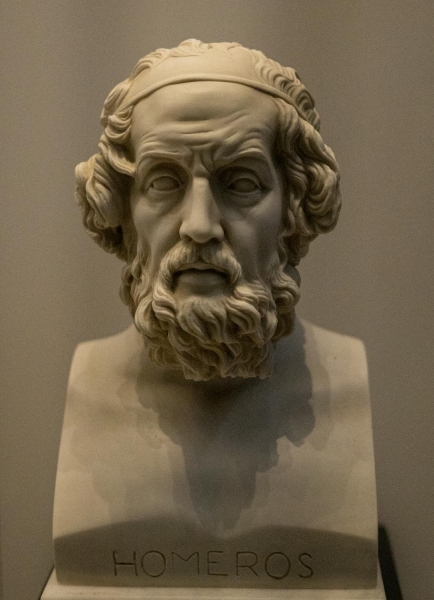Beyond the Binary: A Critical Analysis of Gender in Ursula K. Le Guin's 'The Left Hand of Darkness'

Think of gender as an ever-expanding canvas, brushed with endless sun-shades that refuse to be limited by a black-and-white palette. In Ursula K. Le Guin's exceedingly good work of literature, The Left Hand of Darkness, the adventure into the geographies of gender is out of the ordinary. Le Guin invites readers to walk through uncharted territories where androgyny and societal norms intersect and challenge our perceptions.
Ursula K. Le Guin, a true luminary inside the global of technological know-how fiction, didn't just write memories along with her pen—she used it to undertaking the norms, to spark our imaginations. And while you dive into the pages of "The Left Hand of Darkness," you're witnessing the sheer brilliance that defines Le Guin's paintings. A story unfolds on its pages – a tapestry woven with threads of gender research in the international community that defies all expectations.
In this review, Le Guin's narrative is not always just a story; it is an invitation to question, to reflect and to delve into the complexities of gender identification. Join us as we resolve the layers of The Left Hand of Darkness, where every internet web page is a brush stroke that paints an image of a world unlike any other.
Gender Exploration in "The Left Hand of Darkness"
Let's step onto the frosty terrains of Gethen, a world where gender dances as freely as the shifting snow. In Ursula K. Le Guin's brushstrokes, androgyny comes to life—a vibrant portrayal where individuals effortlessly weave between genders. The dance of fluid gender roles challenges what we thought we knew, encouraging us to question the very essence of who we are.
As we venture through the societal tapestry of Gethen, we uncover how deeply ingrained expectations mold its inhabitants. Here, the absence of a fixed gender extends its influence into every nook and cranny of life—shaping behaviors, intertwining relationships, and orchestrating the delicate ballet of power. With Le Guin as our guide, we navigate this intricate terrain, peeling back the layers of societal norms and revealing the profound consequences of a world unbound by the constraints of a binary perspective.
Linguistic Challenges and Cultural Perspectives
- A. Language and Communication Language, the sculptor of thought, encounters its own challenges on Gethen. Le Guin invites readers to grapple with the intricacies of a language designed for a gender-fluid society. The very words used to describe gender become a lens through which we explore the profound difficulty of translating concepts that transcend our binary understanding.
- B. Diversity in Cultural Perspectives Cultural nuances on Gethen offer a kaleidoscopic view of gender. Different cultures, each with its unique lens, contribute to a rich tapestry of understanding. Le Guin encourages readers to reflect on how cultural diversity shapes individual perceptions of gender, unveiling the intricate layers that define identity.
Relationships, Identity, and Legacy
In the midst of a genderless society, Le Guin's narrative navigates the complexities of personal relationships. Romantic entanglements and the exploration of sexuality become a lens through which characters grapple with their identities. The challenges and possibilities painted on this canvas of connection beckon readers to ponder the universal quest for intimacy.
Le Guin's narrative prowess extends beyond storytelling; it becomes a vehicle for exploring gender complexities. The novel's reception echoes the profound impact of her narrative techniques, leaving an indelible legacy in the realm of gender representation in science fiction. Through the lens of "The Left Hand of Darkness," Le Guin invites readers to critically observe social constructs and ascribe glory to the quo.
When we delve into the story that Ursula K. Le Guin spun in "The Left Hand of Darkness," we are now no longer just analyzing; we are going on a deep journey. Le Guin's words guide us and invite us on a mission beyond traditional concepts, beyond the binary. The echoes of gender fluidity linger, leaving an indelible mark on the hearts and minds of those who embrace the challenge of exploring uncharted territories within themselves. This literary masterpiece isn't just a book; it's a timeless echo that resonates within anyone daring to navigate the complexities of identity.
As we say goodbye to the icy realms of Gethen and the captivating journey through gender in "The Left Hand of Darkness," we can't help but feel the richness of Ursula K. Le Guin has added to our reading adventure. The ebb and flow of androgyny, the ripples of societal influences, the twists of language challenges, and the myriad cultural perspectives have all become cherished markers in our expedition beyond traditional boundaries.
In navigating the intricate relationships and identities unfurled within the narrative, we witness the legacy of Le Guin's narrative techniques—a legacy that transcends the pages of a book. "The Left Hand of Darkness" stands not merely as a story but as a gateway to critical reflection on societal norms and gender representation in science fiction.
Le Guin's legacy beckons us to question, to challenge, and to embrace the beauty of a gender spectrum that defies confinement. In the spirit of this exploration, let conversations flourish and perspectives expand, for beyond the binary lies a realm of infinite possibilities waiting to be uncovered and celebrated. May this critical analysis serve as a stepping stone for students and enthusiasts alike, propelling them into a world where the boundaries of gender are as boundless as the imagination—an imagination kindled by the unparalleled genius of Ursula K. Le Guin.




